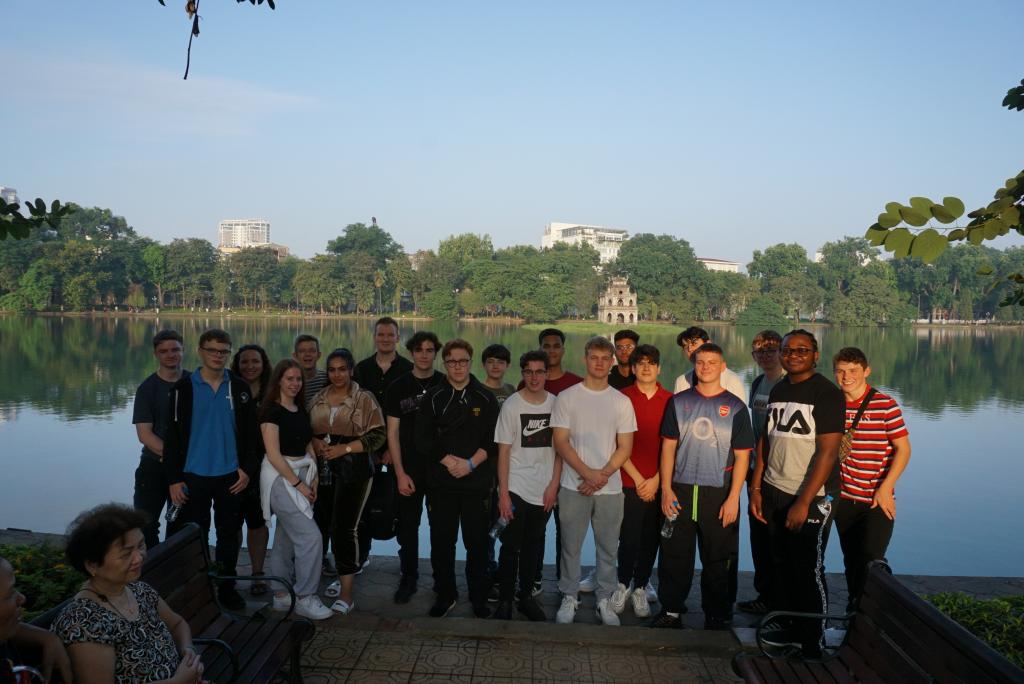In October 2019, St Benedict's History department led a school trip to Hanoi and Ho Chi Minh City. Students from Years 11 and 13 enjoyed stunning scenery and returned with an enriched understanding of Vietnamese history and culture.
On day one of the trip, the group landed in Hanoi very early in the morning, and after a traditional Vietnamese breakfast of Banh Mi (a Vietnamese baguette), the students visited the Ho Chi Minh Mausoleum, to file respectfully past Ho Chi Minh’s body. They were then given a taste of Vietnam’s beautiful natural landscape with a boat cruise around Halong Bay, a UNESCO world heritage site that has been designated one of the ‘New 7 Wonders of the World’.
Nicola Nicholls, Head of History at St Benedict’s, said: ‘The scenery was breath-taking, and the students were given the opportunity to kayak to their own private beach where they played volleyball in the sea. We also explored some of the multiple sea caves. This was certainly an experience I don’t think any of us will ever forget.’
The week-long trip included a journey to Vung Tau, where the students visited the site of the Battle of Long Tan (18th August 1966), an Australian army base and a memorial for the soldiers who died in the battle. The students and teachers commemorated all the lives lost with a minute’s silence. Afterwards there was an opportunity for the group to meet people who had experienced the war.
One day was dedicated to visiting the Cu Chi Tunnels, a network of connecting tunnels which runs underneath Ho Chi Minh City.
Sixth Form student Chris Moran said: ‘Seeing the size of the tunnels that the Vietnamese people were forced to live in during the Vietnam war gave us a real insight into the living conditions. Hoang, our tour guide, explained to us that many Vietnamese people would be born and then live inside the tunnels for the duration of the French Indochina War and the Civil War, 30 years, which I found staggering.’
During the trip, the students had the opportunity to visit the War Remnants Museum in Ho Chi Minh City, which exhibits planes, tanks, and a grounded American plane, a national treasure of Vietnam. The students’ time in Ho Chi Minh City also included a visit to Diem’s presidential palace, now the Reunification Palace.
Reflecting on the trip to Vietnam, Elikem Nornoo, in Year 11, said: ‘The lack of anger and vengeance in a country which has been through so much was humbling, and their determination to build their country for a bright new future was inspiring.’




